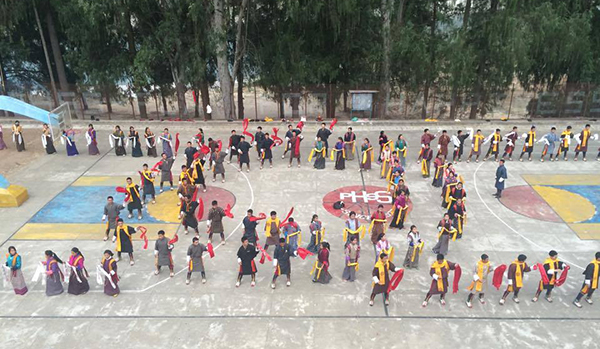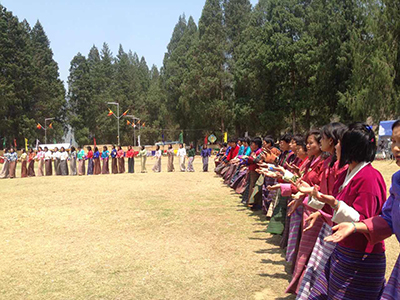 Punakha is all set to celebrate Zhabdrung Kuchoe, tomorrow. The celebration is to mark the 400 years of Zhabdrung’s arrival to Bhutan.
Punakha is all set to celebrate Zhabdrung Kuchoe, tomorrow. The celebration is to mark the 400 years of Zhabdrung’s arrival to Bhutan.
The celebrations will be held at Punthang Dewachenpoi Phodrang or the palace of great bliss. His Majesty the King, His Majesty the Fourth Druk Gyalpo, Her Majesty the Gyaltsuen, and Members of Royal Family will grace the celebrations.
The naming ceremony for His Royal Highness the Gyalsey will be held at Machey Khuenden.
Zhabdrung Phunsum Tshogpai Thongdrel will be unfurled in the first courtyard of the Dzong. Sacred relics will also be on display for public veneration. Some relics have been brought from as far as Chari Monastery in Thimphu.
As part of the celebrations, Thangzona, the dzong’s ground, will host various cultural programmes.
About 10,000 people are expected to take part in the celebrations.
Zhabdrung Ngawang Namgyal was born to Tenpai Nyima and Sonam Pelgyi Buthri in 1594 at Ralung monastery in Tibet. Zhabdrung’s birth was considered a fulfillment of prayers and aspirations of Drukpa Kagyu followers.
Zhabdrung Ngawang Namgyal is the 12th lineage holder of Drukpa Kagyu and an immediate re-incarnation of Kunkhyen Pema Karpo.
Zhabdrung Rinpoche along with his 30 attendants took two days to reach the Bhutan- Tibet border.
Upon arrival at Pangrizampa in Thimphu, almost all the protecting deities and Lams said to have gathered to welcome Zhabdrung.
The birth of Bhutan, as one nation, in many significant ways, dates back to the 17th Century – the period of Zhabdrung’s arrival into the country. Through territorial unification, Zhabdrung promoted political unity in the country under the banner of Drukpa religious supremacy.
While major part of the western Bhutan was ruled by Lam Kha Nga, pockets of the eastern region had their own different rulers. Bhutan then had no common ruler. So, in his effort towards unifying the country, Zhabdrung first defeated Lam Kha Nga and brought their region of rule under him. He then went on to conquering the eastern region and ultimately brought the country under one rule.
While strengthening political unity, Zhabdrung also repelled five major external threats of Tibetan invasions. By 1656, he brought the country under the Drukpa political rule.
Zhabdrung is accorded for introduction of the dual system of government, Choesi, in the country. Under this system, the Chief Abbot or Je Khenpo looked after the religious matters while political affairs were administered by temporal head, the desi.
Zhabdrung also introduced taxation system in the country. It started as wang -nyen or voluntary offering. It was the state’s method of mobilizing resources for monastic body.
Later, such voluntary offerings were institutionalized as tax. People and monastic bodies were also subject to compulsory labour for construction of dzongs, temples and bridges, which remained almost unchanged until the third Druk Gyalpo’s reign.
One of the significant contributions of Zhabdrung to Bhutan’s political history is Kathrim, a formal code of laws. The laws contain specific reference to the ten pious acts, Lhachoe Gyewa Chu and the sixteen virtuous acts of social piety, referred to as Michoe Tsangma Chudrug.
With Zhabdrung’s code as the basis, the National Assembly of Bhutan enacted the first comprehensive codified laws, Thrimzhung Chhenmo in 1959. And today, under the leadership of Their Majesties the Kings, the laws have been adopted as the Constitution of Bhutan.












